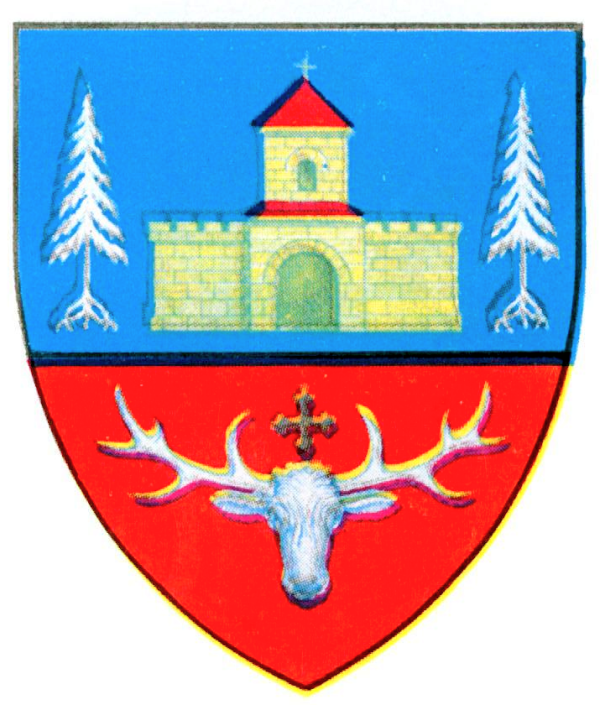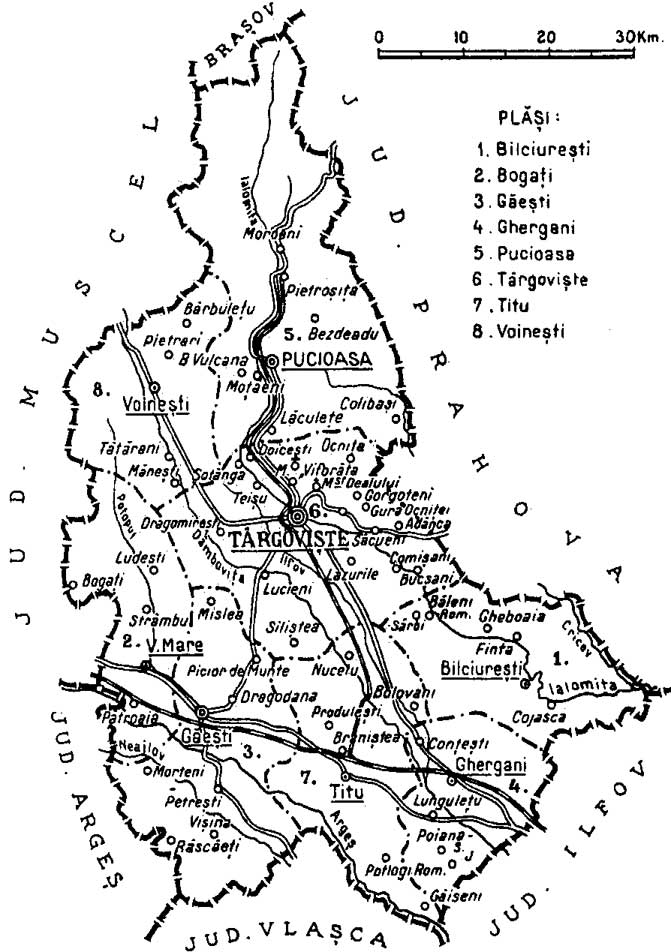|
Cetățeni
Cetățeni is a Commune in Romania, commune in Argeș County, Muntenia, Romania. It is composed of three villages: Cetățeni, Lăicăi, and Valea Cetățuia. The commune is situated at a distance of from Pitești and from Câmpulung, right next to Dâmbovița County. The neighboring communes are: Stoenești, Argeș, Stoenești to the north, Pucheni to the east, Malu cu Flori to the south, Văleni-Dâmbovița, Văleni to the west, and Mioarele to the northwest. is located here. References Communes in Argeș County Localities in Muntenia {{Argeş-geo-stub ... [...More Info...] [...Related Items...] OR: [Wikipedia] [Google] [Baidu] |
Mioarele
Mioarele, formerly known as Mățău, is a Commune in Romania, commune in Argeș County, Muntenia, Romania. Located 4 kilometers southeast of Câmpulung,''Primăria Mioarele. Informații. Prezentare comună'' at the Argeș County Council site on the way to Târgoviște, it touches both the Argeș River valleyIoana Proca Floria, "Splendorile naturii. Punctul fosilifer de la Suslănești", in ''Magazin'', Vol. XLVIII, Issue 13, March 2005, p. 10 and the banks of its Argeșel tributary.Dan Simonescu, "Din istoria folclorului și folcloristicii. Folcloristul C. Rădulescu-Codin (1875—1926)", in ''Revista de Folclor'', Issue 4/1957, p. 102 It is composed of five villages: Mățău (the co ... [...More Info...] [...Related Items...] OR: [Wikipedia] [Google] [Baidu] |
Argeș County
Argeș County () is a county (''județ'') of Romania, in Muntenia, with the county seat at Pitești. Demographics At the 2021 Romanian census, 2021 census, the county had a population of 569,932 and the population density was . At the 2011 Romanian census, 2011 census, it had a population of 612,431 and the population density was . * Romanians – 97% * Romani people in Romania, Roma (Gypsies) and Minorities of Romania, other ethnic groups – 3% Geography This county has a total area of . The landforms can be split into 3 distinctive parts. In the north side there are the mountains, from the Southern Carpathians group – the Făgăraș Mountains with Moldoveanu Peak (2,544 m), Negoiu Peak (2,535 m) and Vânătoarea lui Buteanu peak (2,508 m) towering the region, and in the North-East part the Leaotă Mountains. Between them there is a pass towards Brașov, the Rucăr–Bran Pass. The heights decrease, and in the center there are the sub-carpathian hills, with heights aro ... [...More Info...] [...Related Items...] OR: [Wikipedia] [Google] [Baidu] |
Commune In Romania
A commune (''comună'' in Romanian language, Romanian) is the lowest level of administrative subdivision in Romania. There are 2,686 communes in Romania. The commune is the rural subdivision of a Counties of Romania, county. Urban areas, such as towns and cities within a county, are given the status of ''Cities in Romania, city'' or ''Municipality in Romania, municipality''. In principle, a commune can contain any size population, but in practice, when a commune becomes relatively urbanised and exceeds approximately 10,000 residents, it is usually granted city status. Although cities are on the same administrative level as communes, their local governments are structured in a way that gives them more power. Some urban or semi-urban areas of fewer than 10,000 inhabitants have also been given city status. Each commune is administered by a mayor (''primar'' in Romanian). A commune is made up of one or more villages which do not themselves have an administrative function. Communes ... [...More Info...] [...Related Items...] OR: [Wikipedia] [Google] [Baidu] |
Muntenia
Muntenia (, also known in English as Greater Wallachia) is a historical region of Romania, part of Wallachia (also, sometimes considered Wallachia proper, as ''Muntenia'', ''Țara Românească'', and the rarely used ''Valahia'' are synonyms in Romanian). It is situated between the Danube (south and east), the Carpathian Mountains (the Transylvanian Alps branch) and Moldavia (both north), and the Olt River to the west. The latter river is the border between Muntenia and Oltenia (or ''Lesser Wallachia''). Part of the traditional border between Wallachia/Muntenia and Moldavia was formed by the rivers Milcov and Siret. Geography Muntenia includes București - Ilfov, Sud - Muntenia, and part of the Sud-Est development regions. It consists of nine counties entirely: * Brăila * Buzău * Călărași * Argeș * Dâmbovița * Giurgiu * Ialomița * Ilfov * Prahova And parts of four others: * Teleorman (the entire county with the exception of Islaz) * Vrancea (southern p ... [...More Info...] [...Related Items...] OR: [Wikipedia] [Google] [Baidu] |
Romania
Romania is a country located at the crossroads of Central Europe, Central, Eastern Europe, Eastern and Southeast Europe. It borders Ukraine to the north and east, Hungary to the west, Serbia to the southwest, Bulgaria to the south, Moldova to the east, and the Black Sea to the southeast. It has a mainly continental climate, and an area of with a population of 19 million people. Romania is the List of European countries by area, twelfth-largest country in Europe and the List of European Union member states by population, sixth-most populous member state of the European Union. Europe's second-longest river, the Danube, empties into the Danube Delta in the southeast of the country. The Carpathian Mountains cross Romania from the north to the southwest and include Moldoveanu Peak, at an altitude of . Bucharest is the country's Bucharest metropolitan area, largest urban area and Economy of Romania, financial centre. Other major urban centers, urban areas include Cluj-Napoca, Timiș ... [...More Info...] [...Related Items...] OR: [Wikipedia] [Google] [Baidu] |
Pitești
Pitești () is a city in Romania, located on the river Argeș (river), Argeș. The capital and largest city of Argeș County, it is an important commercial and industrial center, as well as the home of two universities. Pitești is situated in the historical region of Muntenia. It lies on the A1 freeway (Romania), A1 freeway connecting the city directly to the national capital Bucharest, being an important railway junction, with a classification yard in nearby Bălilești. The city houses the Arpechim Refinery, Arpechim oil refinery, and is a marketing center for the Automotive industry in Romania, automotive industry, in particular, Automobile Dacia. Inhabited since Prehistory of the Balkans, prehistoric times but first mentioned in the 14th century, it developed as a trading town in northern Wallachia, serving as an informal residence for various Rulers of Wallachia, Wallachian Princes until the 18th century. From the 19th century and until the interwar period, it was an importa ... [...More Info...] [...Related Items...] OR: [Wikipedia] [Google] [Baidu] |
Câmpulung
Câmpulung (also spelled ''Cîmpulung'', , , Old Romanian ''Dlăgopole'', ''Длъгополе'' (from Middle Bulgarian), or ''Câmpulung Muscel'') is a municipiu, city in Argeș County, Muntenia, Romania. It is attested on the Fra Mauro map from 1450 as Campo longo. It is situated among the outlying hills of the Southern Carpathians, at the head of a long well-wooded glen traversed by the river Râul Târgului, Târgului, a tributary of the river Argeș (river), Argeș. History Near Câmpulung are the remains of Jidava (castra), Jidava (or Jidova) Roman fort built around 190–211 AD on the frontier of the empire, the Limes Transalutanus; and just next to it, vestiges of a Roman colony, variously identified with Romula, Stepenium and Ulpia Traiana Sarmizegetusa, Ulpia Traiana. Now called ''Grădiștea'' (meaning ''place of a fortress'' in Romanian) or ''Jidovi''. Campulung was also important because it was only 37 km away from the Bran Pass an important trade and mil ... [...More Info...] [...Related Items...] OR: [Wikipedia] [Google] [Baidu] |
Dâmbovița County
Dâmbovița County (; also spelt Dîmbovița) is a county () of Romania, in Muntenia, with the capital city at Târgoviște, the most important economic, political, administrative and cultural center of the county. It is a traditional administrative unit, first attested in 1512. Demographics In 2021, it had a population of 479,404 and the population density was 120/km2. It is one of the most densely populated counties in Romania. * Romanians – 87.09% * Roma - 3.96% * Bulgarians - 0.31% * Serbians 0.1% * Others - 0.13% * Unknown - 8.41% Name The county is named after the Dâmbovița River, which is a name of Slavic origin, derived from ''Дъб, dâmb'', meaning "oak", as it once flowed through the oak forests of the Wallachian Plain. Geography Dâmbovița county has a total area of 4,054 km2 (1.7% of the country's surface). It is situated in the south-central part of the country, on the Ialomița and Dâmbovița river basins. The highest altitude is Omu Pe ... [...More Info...] [...Related Items...] OR: [Wikipedia] [Google] [Baidu] |
Stoenești, Argeș
Stoenești is a commune in Argeș County, Muntenia, Romania. It is composed of seven villages: Bădeni, Cotenești, Lunca Gârtii, Piatra, Slobozia, Stoenești, and Valea Bădenilor. The commune lies in the foothills of the Southern Carpathians, on the banks of the Dâmbovița River. It is located in the northeastern part of Argeș County, on the border with Dâmbovița County Dâmbovița County (; also spelt Dîmbovița) is a county () of Romania, in Muntenia, with the capital city at Târgoviște, the most important economic, political, administrative and cultural center of the county. It is a traditional administra .... Georgiana Văcaru, born in 1976 in Stoenești, is the woman with the most children in Romania (20 in all). References Communes in Argeș County Localities in Muntenia {{Argeș-geo-stub ... [...More Info...] [...Related Items...] OR: [Wikipedia] [Google] [Baidu] |
Pucheni
Pucheni is a commune in Dâmbovița County, Muntenia, Romania with a population of 1,558 people as of 2021. It is composed of five villages: Brădățel, Meișoare, Pucheni, Valea Largă, and Vârfureni. The commune is located in the northern part of the county, on the border with Argeș County. Natives * Răzvan Cojanu Răzvan Andrei Cojanu (born 10 March 1987) is a Romanian professional boxer. As an amateur he represented Romania at the 2009 Jeux de la Francophonie, winning a gold medal in the super-heavyweight division; he also represented Romania at the ... (born 1987), boxer * Mircea Georgescu (born 1938), footballer * Ovidiu Iacov (1981– 2001), footballer * Andreea Părăluță (born 1994), footballer References Communes in Dâmbovița County Localities in Muntenia {{Dâmboviţa-geo-stub ... [...More Info...] [...Related Items...] OR: [Wikipedia] [Google] [Baidu] |
Malu Cu Flori
Malu cu Flori is a commune in Dâmbovița County, Muntenia, Romania with a population of 2,484 people as of 2021. It is composed of five villages: Capu Coastei, Copăceni, Malu cu Flori, Micloșanii Mari, and Micloșanii Mici. The commune is located in the northwestern part of the county, on the border with Argeș County. Seven generals of the Romanian Army The Romanian Land Forces () is the army of Romania, and the main component of the Romanian Armed Forces. Since 2007, full professionalization and a major equipment overhaul have transformed the nature of the Land Forces. The Romanian Land Forc ... were born in Malu cu Flori: Mihai Anton, Decebal Ilina, Decebal Constantin Diaconescu, Constantin Emilian Pahonțu, Titus Popescu, Dumitru Nicolae Scarlat, and Ion Șerb. References Communes in Dâmbovița County Localities in Muntenia {{Dâmboviţa-geo-stub ... [...More Info...] [...Related Items...] OR: [Wikipedia] [Google] [Baidu] |
Văleni-Dâmbovița
Văleni is a commune in Dâmbovița County, Muntenia, Romania with a population of 2,420 people as of 2021. It is composed of two villages, Văleni-Dâmbovița (the commune center) and Mesteacăn. Geography The commune is located in the northwestern extremity of Dâmbovița County, from the county seat, Târgoviște, on the border with Argeș County. It lies on the banks of the river Mușcel, in a hilly area in the foothills of the Southern Carpathians. Văleni is crossed by the county road A county highway (also county road or county route; usually abbreviated CH or CR) is a road in the United States and in the Canadian province of Ontario that is designated and/or maintained by the county highway department. Route numbering can ... DJ723, which connects the valley of the river Dâmbovița and the national road with the valley of the river Argeș and . History At the end of the 19th century, Văleni was part of plasa Argeșel in Muscel County and included the villa ... [...More Info...] [...Related Items...] OR: [Wikipedia] [Google] [Baidu] |



